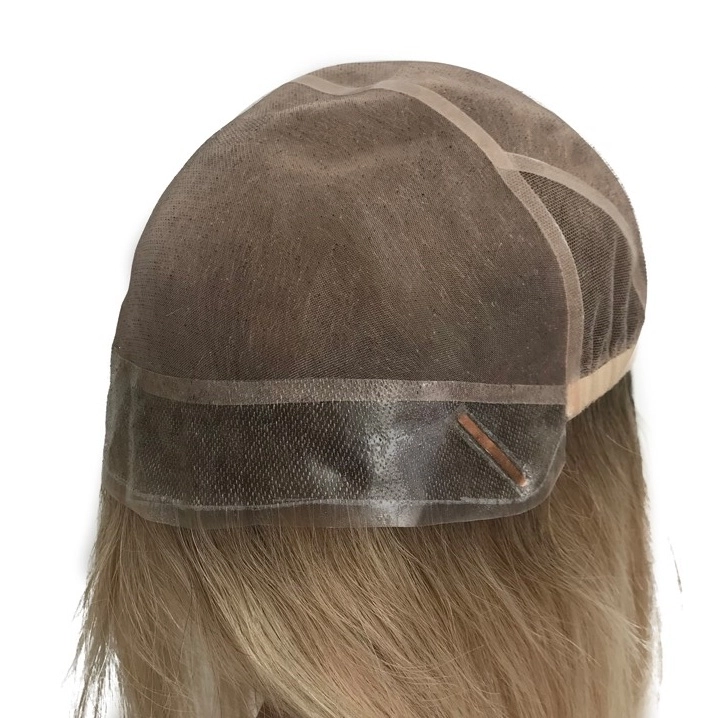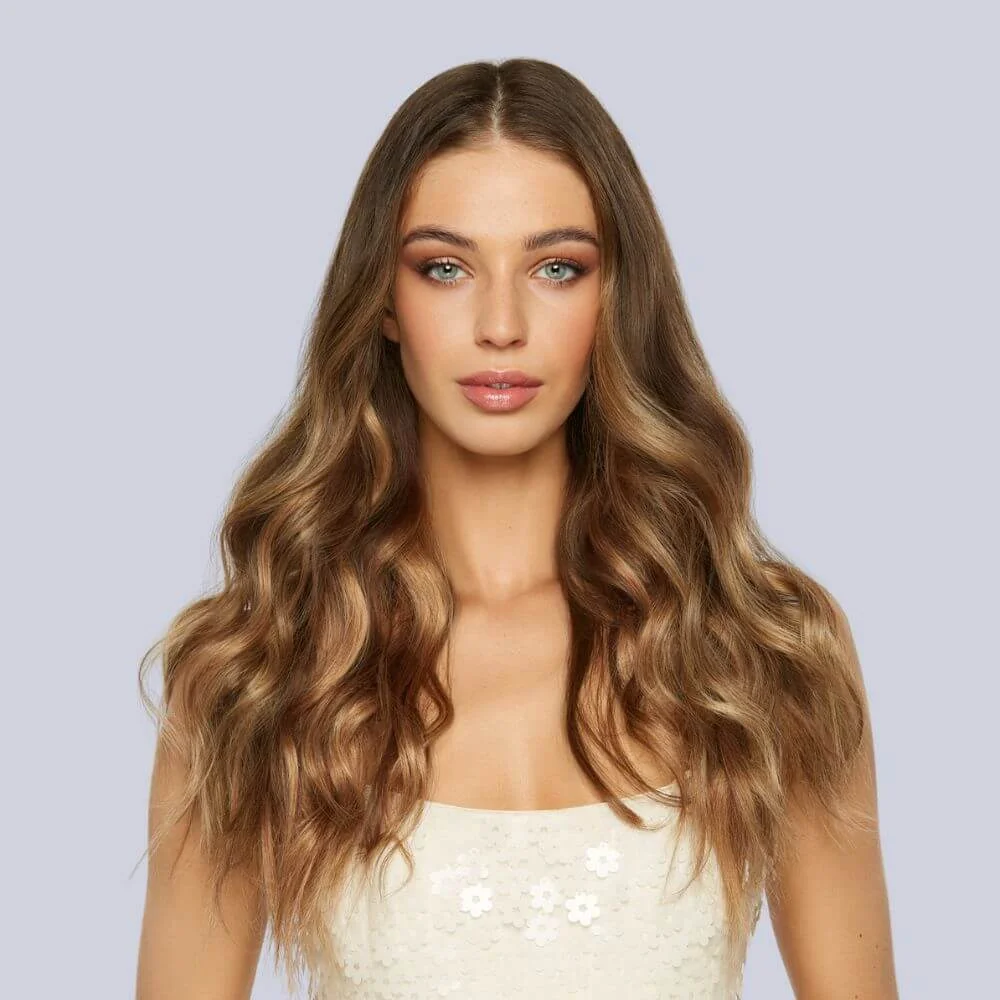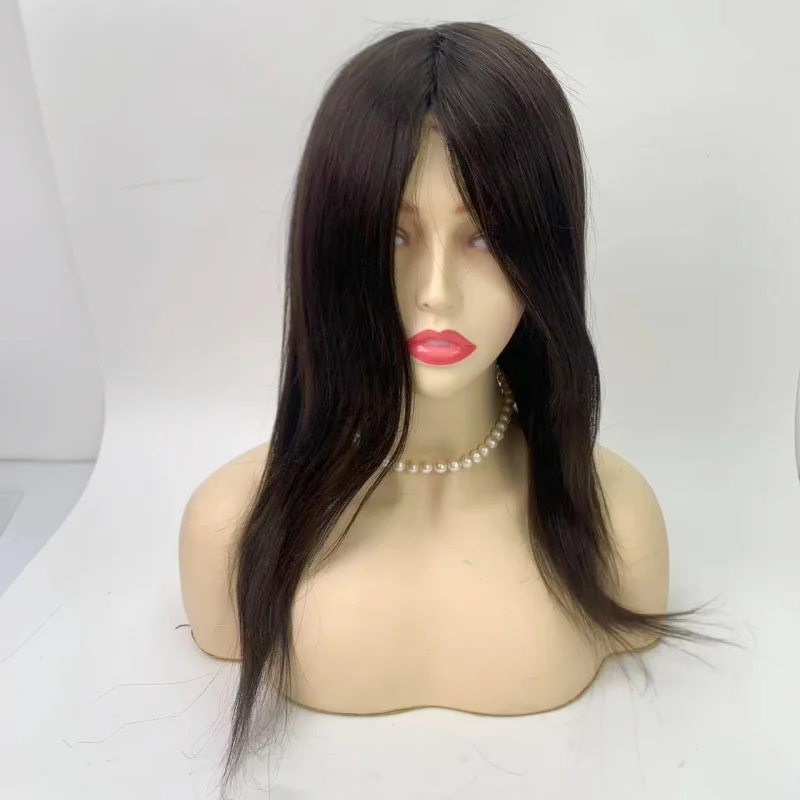
A mono top wig, short for monofilament top wig, represents a sophisticated advancement in wig design and technology. These wigs are highly regarded for their natural appearance, comfort, and versatility, making them a popular choice among wig wearers. Whether for fashion, medical, or personal reasons, mono top wigs offer a solution that combines aesthetics with functionality.

The defining feature of a mono top wig is its monofilament base, typically located at the crown of the wig. Monofilament is a fine, sheer mesh material that is breathable and comfortable. Each hair strand is individually hand-tied to the monofilament, allowing the hair to move freely and naturally. This method creates the illusion of hair growing directly from the scalp, providing a realistic look.
The process of hand-tying each hair strand to the monofilament base is labor-intensive but crucial for achieving a natural appearance. This meticulous technique allows for multidirectional parting, giving the wearer the flexibility to style their hair in various ways without revealing the wig’s base. The knots are typically small and discreet, further enhancing the wig’s realism.
While the monofilament top is the primary feature, mono top wigs often incorporate other cap constructions for added comfort and security. These can include lace fronts for a natural hairline, polyurethane strips for secure adhesion, and adjustable straps for a custom fit. The combination of these elements ensures that the wig is both realistic and comfortable to wear.

Description: This type of wig has a monofilament top with polyurethane (PU) material around the edges. The PU strip can be used for adding adhesive if extra security is needed.
Benefits:
– Security: The PU around the perimeter provides a secure fit, especially for those who use adhesives or tapes.
– Natural Look: The monofilament top gives a natural scalp appearance and allows for versatile parting.
– **Comfort**: Generally comfortable to wear, but the PU strip might feel a bit stiffer compared to other constructions.
Best For:
– Individuals who need extra security for their wig.
– Those who prefer using adhesives for a more secure fit.
– Description: This construction combines a monofilament top with machine wefting at the back. Machine wefts are sections of hair that are sewn together in rows.
Benefits:
– Lightweight: The machine weft back makes the wig lighter and more breathable.
– Natural Look: The mono top still provides a natural appearance and versatile styling.
– Cost-Effective: Often more affordable than fully hand-tied or PU-encased wigs.
Best For:
– Individuals looking for a balance between cost, natural appearance, and comfort.
– Those who do not require the added security of a PU strip.
Description: This lace front mono top pu wig features a monofilament top, PU around the edges, and a lace front. The lace front creates a realistic hairline.
Benefits:
– Natural Hairline: The lace front provides the most natural-looking hairline, perfect for styles where the hair is pulled back from the face.
– Secure Fit: The PU strip offers additional security for adhesive use.
– Versatile Styling: The monofilament top allows for multi-directional parting.
Best For:
– Individuals who prioritize a natural-looking hairline.
– Those who frequently style their hair away from the face.
– People who need extra security and are comfortable using adhesives.
– Daily Wear vs. Occasional Use: If you wear your wig daily, comfort and breathability are crucial. If it’s for occasional use, security and style might be more important.
– Activity Level: For active individuals, a secure fit with PU around might be necessary.
– Sensitivity: If you have a sensitive scalp, ensure the construction doesn’t cause irritation. Monofilament tops are usually gentle on the scalp.
– Weight: Consider the weight of the wig, especially if you plan to wear it for long periods.
– Versatile Parting**: If you like changing your part frequently, a monofilament top is essential.
– Hairline Appearance: For the most natural hairline, choose a lace front.
– Ease of Care: Some constructions are easier to maintain and clean than others. Machine wefted backs might be less delicate than fully hand-tied caps.
– Adhesive Use: If you use adhesives, a PU perimeter provides a secure surface for attachment.
Final Decision
– Mono Top with PU Around: Ideal for those needing extra security and willing to use adhesives.
– Mono Top with Machine Weft Back: Best for budget-conscious wearers looking for comfort and a natural look without the need for adhesives.
– Mono Top with PU Around and Lace Front: Perfect for those seeking the most natural appearance, especially around the hairline, and needing added security.
By considering these factors, you can select the mono top wig cap construction that best suits your individual preferences and lifestyle.
The primary advantage of a mono top wig is its natural appearance. The monofilament base allows the scalp to show through, making the wig virtually indistinguishable from natural hair. This feature is particularly beneficial for those experiencing hair loss due to medical conditions, as it helps restore a sense of normalcy and confidence.
Mono top wigs offer unparalleled versatility in styling. The hand-tied construction allows for hair to be parted in any direction, providing endless styling possibilities. Wearers can easily change their look from a middle part to a side part or even create intricate hairstyles without worrying about exposing the wig’s base.
The monofilament material is lightweight and breathable, making mono top wigs comfortable for extended wear. The sheer fabric allows air to circulate, reducing heat buildup and ensuring that the scalp remains cool. This feature is particularly important for individuals who wear wigs daily or live in warmer climates.
Despite their delicate appearance, mono top wigs are durable and designed to withstand daily wear. The hand-tied knots are secure and resistant to shedding, ensuring that the wig maintains its style and volume over time. With proper care, a high-quality mono top wig can last for several years.
Mono top wigs are often made with hypoallergenic materials, making them suitable for individuals with sensitive scalps. The soft monofilament fabric is gentle on the skin, reducing the risk of irritation and discomfort. This makes mono top wigs an excellent choice for those undergoing chemotherapy or experiencing alopecia.

Mono top wigs are favored by fashion enthusiasts and everyday wearers for their natural look and diverse styling options. They are suitable for daily outings, social gatherings, and special occasions, helping wearers look their best.
For individuals experiencing hair loss due to medical conditions like chemotherapy or alopecia, mono top wigs provide a comfortable and natural-looking solution, helping them regain confidence.
Mono top wigs are widely used in film and stage productions. Actors and performers need different hairstyles to match their roles, and the natural look and flexibility of mono top wigs fulfill these requirements.
The production of mono top wigs is a meticulous and labor-intensive process that combines advanced technology with skilled craftsmanship. This process ensures that the wigs have a natural appearance, are comfortable to wear, and are durable. Here is a detailed look at how mono top wigs are made:
Concept and Design: The first step involves designing the wig. This includes selecting the wig style, length, color, and texture.
Pattern Making: Patterns are created for the wig cap to ensure a proper fit. These patterns are based on different head sizes and shapes.
Monofilament Fabric: High-quality monofilament fabric is chosen for the top of the wig. This fabric is known for its sheer, breathable, and soft qualities.
Hair Fibers: The hair used can be synthetic or human. Human hair wigs are often made from high-quality Remy hair, which maintains the cuticle direction and offers a natural look and feel. Synthetic fibers are chosen for their durability and ease of maintenance.
Creating the Cap: The cap is the base structure of the wig. For mono top wigs, the cap includes a monofilament top section and other materials like lace or polyurethane for additional features.
Sewing the Cap: The cap components are sewn together. This includes attaching adjustable straps, ear tabs, and any lace front panels.
Sorting and Cleaning: Hair is sorted by length and color. Human hair is thoroughly cleaned and conditioned.
Coloring: If necessary, hair is dyed to match the desired color. This process can involve several steps to ensure the color is even and natural-looking.
Hand-Tying Hair to Monofilament: Each strand of hair is individually hand-tied to the monofilament fabric. This is a delicate and time-consuming process but is crucial for creating a natural look. The hand-tied knots allow for multidirectional parting and natural movement of the hair.
Knotting Techniques: Various knotting techniques are used to ensure the hair lays flat and looks natural. Small, discreet knots are made to enhance the wig’s realism.
Lace Fronts: If the wig includes a lace front, the lace is carefully sewn and integrated into the wig cap. This provides a natural-looking hairline.
Polyurethane Strips: For added security, polyurethane strips are sometimes added to the cap. These strips can be used with adhesive for a more secure fit.
Cutting and Styling: Once the hair is tied, it is cut and styled according to the desired look. Professional stylists shape the wig to ensure it looks natural and flattering.
Setting the Style: The wig is set in the desired style using gentle heat or steam for synthetic wigs and traditional styling tools for human hair wigs.
Inspection: Each wig undergoes a thorough inspection to ensure it meets quality standards. This includes checking the hair density, cap construction, and overall appearance.
Testing: Some wigs are tested for durability and comfort. This can include wearing tests and washing tests to ensure the wig maintains its quality over time.
Packaging: The finished wig is carefully packaged to protect it during shipping. Instructions for care and styling are included in the packaging.
Shipping to Retailers and Customers: The wigs are shipped to retailers or directly to customers. Manufacturers often work with various distribution channels, including online platforms and brick-and-mortar stores.
The cost of a mono top wig can vary widely depending on several factors such as the type of hair used, the brand, the quality of craftsmanship, and additional features. Below is a detailed breakdown of the cost range for mono top wigs:
Synthetic Hair: These wigs are generally more affordable than human hair wigs. The cost can range from $100 to $300. High-quality heat-friendly synthetic wigs might be on the higher end of this range.
Human Hair: These wigs are more expensive due to the natural look and feel of real hair. The cost of human hair mono top wigs can range from $300 to $2000 or more, depending on the quality, length, and origin of the hair.
Basic Craftsmanship: Wigs with simple hand-tying and machine-made bases tend to be less expensive.
Premium Craftsmanship: Fully hand-tied wigs with intricate knotting techniques are more labor-intensive and thus more costly.
High-End Brands: Well-known brands such as Jon Renau, Raquel Welch, and Ellen Wille typically charge higher prices due to their reputation for quality.
Lesser-Known Brands: Brands that are less well-known or newer to the market may offer more competitive pricing to attract customers.
Lace Fronts: Wigs with lace fronts, which provide a more natural-looking hairline, can add $50 to $200 to the cost.
Customization: Custom-made wigs tailored to a customer’s specific measurements and preferences are usually more expensive.
Synthetic Mono Top Wigs: $100 to $300
Human Hair Mono Top Wigs: $300 to $2000+
High-End Designer Mono Top Wigs: $500 to $3000 or more, especially for custom orders or premium hair quality
Choosing the correct mono top wig involves several considerations to ensure it matches your needs and preferences. Here’s a step-by-step guide to help you make the right choice:
-Mono Top Wigs: These wigs have a thin, breathable, mesh-like material at the top where individual hair strands are hand-tied. This gives the appearance of natural hair growth and allows for versatile styling.
-Price Range: Mono top wigs can vary widely in price. Establish a budget before you start shopping to narrow down your options.
– Synthetic Hair: More affordable, requires less maintenance, and holds styles well.
– Human Hair: More expensive, offers a natural look and feel, and allows for more styling options, including heat styling.
– Measure Your Head: Use a flexible tape measure to find the circumference of your head. Most wigs come in petite, average, and large sizes. Choose a cap size that fits comfortably and securely.
– Full Monofilament Top: Offers the most natural look and parting versatility.
– Partial Monofilament: Combines monofilament with machine-wefted or hand-tied sections for a balance of natural appearance and affordability.
– Hand-Tied Cap: Each hair is individually tied, providing the most natural movement.
– Lace Front: A lace front combined with a monofilament top offers a realistic hairline and natural parting.
– Length: Choose a length that suits your lifestyle and comfort. Longer wigs require more maintenance.
– Style: Decide if you want a straight, wavy, or curly wig. Consider a style that complements your face shape.
– Match Your Natural Color: For the most natural look, select a color close to your natural hair.
– Experiment: If you want a change, try a new color, but consider your skin tone to ensure it flatters your complexion.
– Density: This refers to the thickness of the hair on the wig. Choose a density that looks natural and matches your hair’s usual volume.
– Return Policy: Ensure the retailer has a favorable return policy in case the wig does not meet your expectations.
– Reviews: Look for customer reviews to gauge satisfaction and quality.
– Recommendations: Seek advice from friends or online communities who wear wigs.
– Reputable Retailers: Buy from well-known and trusted wig shops or websites to ensure quality and authenticity.
By considering these factors, you can find a mono top wig that looks natural, fits well, and meets your styling needs.

Mono top wigs offer numerous advantages that make them a preferred choice for consumers seeking a natural, comfortable, and versatile hair solution. From their realistic appearance and breathability to their durability and styling options, these wigs provide exceptional value and satisfaction. For manufacturers, understanding and highlighting these benefits can help in developing effective marketing strategies and meeting the diverse needs of their customers. By continuing to innovate and prioritize quality, manufacturers can maintain a competitive edge in the dynamic wig industry.
Answer: A Mono Top Wig is a type of wig constructed with a single layer of fine mesh material at the crown, where each hair is individually hand-tied. This technique creates a natural-looking scalp appearance and allows for versatile styling.
Answer: Unlike traditional wigs, Mono Top Wigs feature a monofilament top that mimics the look of a natural scalp. This construction provides a more realistic appearance and allows for multi-directional parting.
Answer: Yes, Mono Top Wigs are designed for comfort. The breathable mesh material and lightweight construction ensure that wearers can enjoy all-day comfort without feeling weighed down.
Answer: With proper care and maintenance, a Mono Top Wig can last for several months to a year or more. Regular cleaning, gentle handling, and proper storage can help prolong its lifespan.

New customization and stock clearance
WhatsApp us